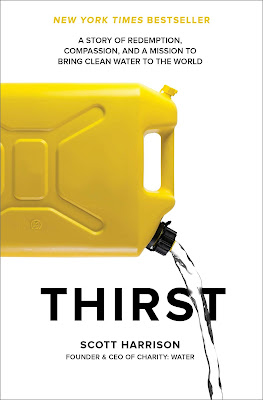#allmalepanels in international development are about more than just the absence of women
At least my tweet on the recent high-level World Bank Global Infrastructure Forum 2016 made it into the top 5 tweets for the hashtag #investininfra:
Nothing says "inclusive #globaldev" clearer than a quasi-#allmalepanel @WorldBank on #InvestInInfra feat 11 suits pic.twitter.com/893qo9GQzC— Tobias Denskus (@aidnography) April 16, 2016
But #allmalepanel tweets (or quasi-#allmalepanels as Zeinab Badawi moderated the event) are about more than just pointing out the fact that 11 men dominated the stage at this particular event.
#allmalepanels as
communication challenges
Let’s put it very bluntly: The more men are in a group
shot, the worse it looks; if you are organizing an event or communicate about
it make sure you actually avoid the group photo; break up panels, add a female
moderator, make sure at least one men does not wear a dark suit and tie.
This is window-dressing, absolutely, but at least you may be able to mitigate short-term social media communication fall-outs and viral spreading of the group shot such as this one I wrote about last year:
This is window-dressing, absolutely, but at least you may be able to mitigate short-term social media communication fall-outs and viral spreading of the group shot such as this one I wrote about last year:
.@JeffDSachs & 24 (!) men discuss #post2015 *INCLUSIVE* #globaldev with @ADB_HQ #allmalepanel pic.twitter.com/MQrQhNS0lQ— Tobias Denskus (@aidnography) August 16, 2015
But these pictures say so much more about
development in general and development banks in particular than simply highlighting gender disparities; what I always find astonishing is the uniformity created by men wearing suits-zoom out a little
bit and everybody pretty much looks the same. It distances and depersonalizes
core aspects of development-inclusiveness, diversity, change-and given that it is
2016 this cannot simply be addressed with an ‘old habits die hard’ shoulder
shrug.
Is this really the
reality of international development (finance) in the second decade of the 21st
century?
I noticed that World Bank staff and other attendees of the
event shared images of the panel with comments along the lines of how great and
powerful the Bank is in mobilizing high-level, powerful support and
convening such a top-level event.
It is scary to imagine that this is actually true and that this is really what ‘power’ looks like in the broader context of development finance and sectors such as infrastructure where a lot of money goes to.
It is scary to imagine that this is actually true and that this is really what ‘power’ looks like in the broader context of development finance and sectors such as infrastructure where a lot of money goes to.
‘We’ can take the
pledge, but do ‘they’ care?
This is yet another reminder how important it is to
subscribe to The Pledge that Owen Barder started to change panel dynamics or report conferences and panels (not just in development) to initiatives such as 50 percent. I also wonder whether female moderators can or should play a stronger role in pointing out these dynamics, especially if they are getting paid to facilitate high-level events.
Maybe a self-reflective tweet from the communications team can at least add to a more critical discussion on why certain industries, sectors or parts of the world have some catching up to do when it comes to more inclusive panels.
But I am more worried that many parts of the development industry still simply do not care about gender- and other power-dynamics and already prepare the next high-level panel with lots of men in suits...
Maybe a self-reflective tweet from the communications team can at least add to a more critical discussion on why certain industries, sectors or parts of the world have some catching up to do when it comes to more inclusive panels.
But I am more worried that many parts of the development industry still simply do not care about gender- and other power-dynamics and already prepare the next high-level panel with lots of men in suits...




Comments
Post a Comment